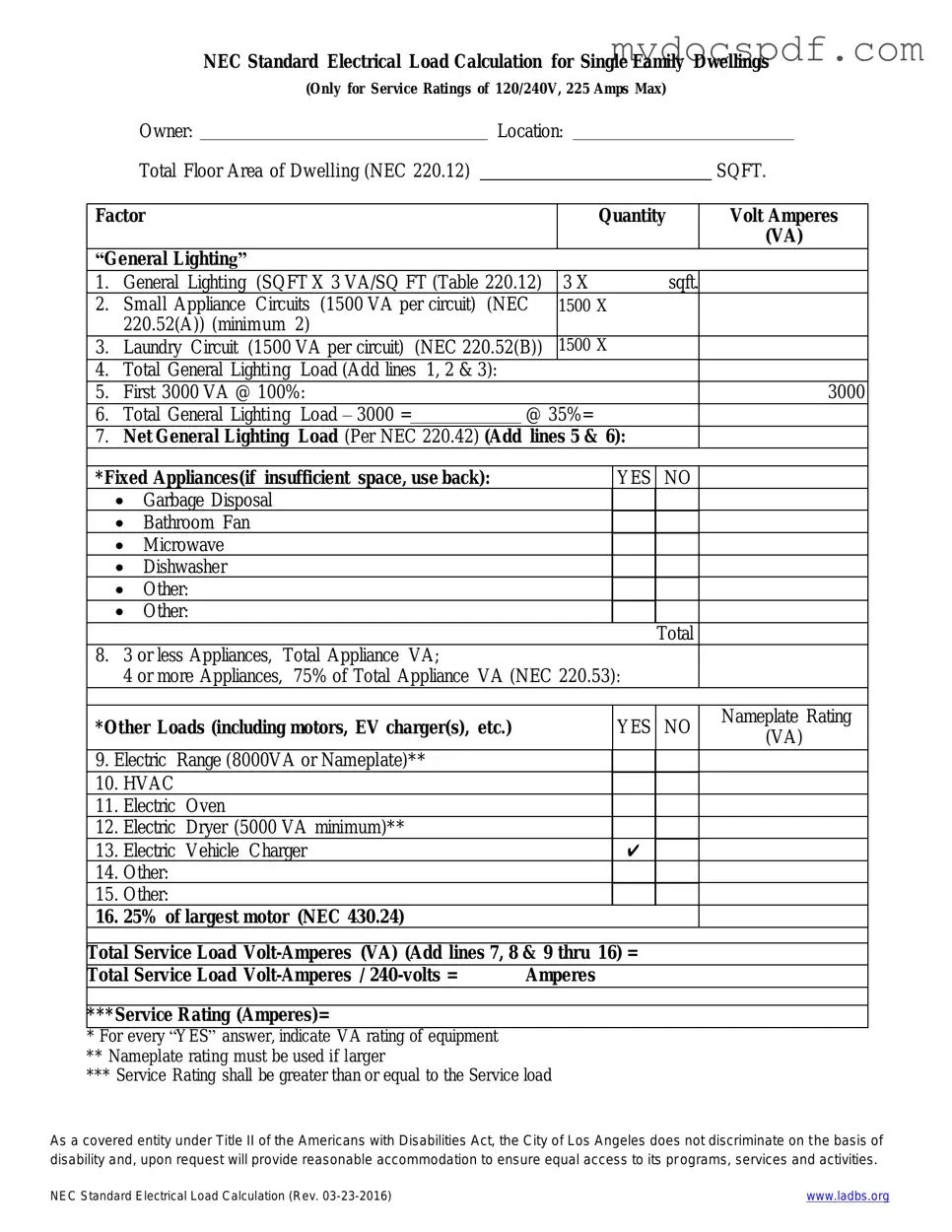Get LADBS NEC Standard Electrical Load Calculation Form in PDF
The LADBS NEC Standard Electrical Load Calculation form is a crucial document used to determine the electrical load requirements for residential and commercial buildings in compliance with the National Electrical Code. This form helps ensure that electrical systems are designed safely and efficiently, taking into account various factors such as appliances, lighting, and other electrical equipment. Completing this form accurately is essential for obtaining the necessary permits and ensuring the safety of electrical installations.
Access Editor Here

